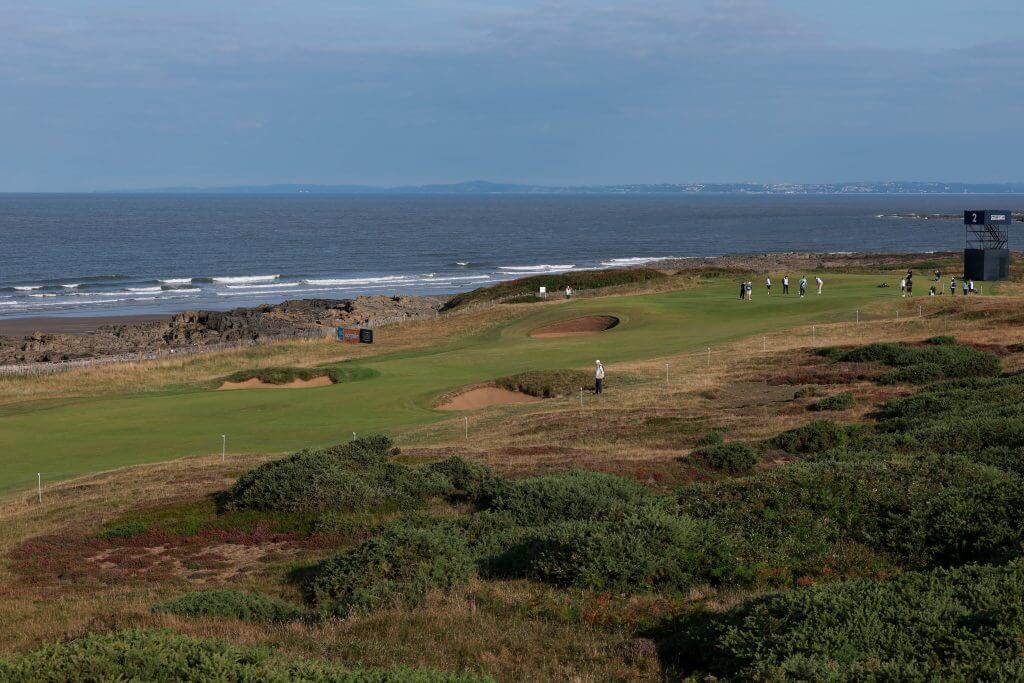PORTHCAWL, WALES – This week is always a dream come true for the 144 golfers who have qualified to play at the AIG Women’s Open championship at Royal Porthcawl. But for Welsh professional Darcey Harry, it eclipses everything.
While many of the field, including defending champion Lydia Ko, are visiting Wales for the first time, this is Harry’s home course. These are the greens she has trained on and where she has been a member for six years.
Advertisement
Harry, 22, is from nearby Dinas Powys, a town with a population of just 9,000 people and a 20-minute drive southwest of Cardiff, the country’s capital.
After turning professional in late 2024, she won the Hulencourt Women’s Open in Belgium in June, her first win on the Ladies European Tour, to secure her place at Porthcawl. In doing so, she achieved a long-held ambition of playing the course she knows like the back of her hand during a major event.
But Porthcawl, tucked up against the blustery Bristol Channel with its spectacular beach views and unpredictable weather, does not feel like “home” to Harry this week — and not just because of the thousands of people who have descended on this sleepy yet scenic part of Wales.
The course, which world No. 1 Nelly Korda called “absolutely breathtaking”, has been rejigged in various ways to challenge the world’s best golfers. The first hole from which Harry tees off on Thursday afternoon, for example, is usually the last hole on the course.
Advertisement
“There are a few tee boxes I’ve never played off, which was quite surprising going out and playing the course,” Harry said in a press conference on Wednesday. “It was like, ‘Oh, I never knew this was here!’”
Harry says the greens are moving a lot quicker and the course, which many (including Korda) have noted takes “creativity” to navigate, is playing longer too. Peter Evans, the head PGA professional at Porthcawl for the past 30-plus years and someone who knows every patch of gorse to avoid, is relishing it.
“The mood of the course changes a lot here – and quickly,” he tells The Athletic. “It freshens as the tide rolls in and as the tide goes back out, it softens. You can play here in a gale when the sea is rough and it’s still wonderful. But when you’ve had a bright day like today (Wednesday’s final practice round), you see it in its full glory because you’ve got the colours: the greens, the blues, the sandy browns. A painter would have a field day here; it is a painter’s paradise.
“Every hole is different. You don’t play straight out and back. You loop, twist and cut back on yourself. You can play holes here, which on the card seem fairly innocuous, but because of the wind, it can play so much longer.”
Advertisement
Hole eight, compared to the “postage stamp” at Royal Troon, is one of those. The 122-yard, par-3 is the shortest hole, but a nasty crosswind means it can be one of the most difficult. The key is to aim off the green and trust the wind to guide the ball down and away from the six bunkers, which look to swallow it.
The members here boast how the sea can be viewed from all 18 holes, and rightly so. Rest Bay and Porthcawl beach, where surfers and kiteboarders take advantage of high-speed winds, are postcard-like. The course also takes in views of the Gower Peninsula, a region in Wales recognised for its outstanding natural beauty. In the opposite direction sits England and the cliff edges of Exmoor National Park.
There is so much to see and yet from hole three, a par-4, and the 18th hole, a par-5, golfers cannot see the pin, meaning they are forced to play blind tee shots.
One landmark over the 6,748 yards of the course is Sker House, which juts out in the direction of Port Talbot, a steelworks town that has the M4 motorway slicing through it and is where renowned actors Sir Anthony Hopkins and Michael Sheen both grew up. The yellow Sker House, which is now privately owned, was home to Cistercian monks more than 900 years ago. According to local legend, it is said to be haunted by the Maid of Sker.
Advertisement
Another prominent building sits to the left-hand side of the first hole on the 134-year-old course. It is now a private residence, but was a former holiday home for local coal miners. “When the mines used to shut for the last two weeks of July, that’s where the miners went to have their holidays,” Evans says.
Peel back its many layers, avoid its annoyingly placed bunkers, and this 72-par course has so much to love. Tiger Woods might disagree, though, having found it a frustrating experience when representing the United States here as a 19-year-old in the Walker Cup in 1995.
“I’ve always said it will be the one thing on my tombstone: “The man that beat Tiger”,” says Gary Wolstenholme, who beat Woods at Porthcawl in a singles match-up.
Woods was the world amateur No. 1 at the time and within 18 months he would go on to win his first major, the Masters at Augusta, by a record 12 strokes.
Advertisement
“He was incredibly mature,” recalls Wolstenholme, now 64, who played at the Senior Open last weekend. “He was able to cope with pressure and situations because even in those days, everyone was clamouring around him. He drove the ball further than anyone else and had a short game.
“What did that equate to? Somebody who can destroy any golf course on the planet – which is what he then did.”
But not at Royal Porthcawl. Woods’ problem was some shots landing out of bounds, a theme which will catch golfers out this weekend across the narrow and windswept fairways. Wolstenholme says Woods even clonked someone on the top of the head with a golf ball, which was marked as out of bounds on a weekend when Britain and Ireland defeated the U.S. 14-10 on Welsh soil.
“Before we won, there was talk of it being renamed the ‘Walkover Cup’ because the Americans kept on winning,” Wolstenholme adds. “Beating Tiger was a big deal because I was on a hiding to nothing and I happened to beat him, which gave us a two-point advantage going into the second day.”
Advertisement
There have been surprisingly few major golf tournaments in Wales, but golf clubs in the country are hoping this will change. The Senior Open has been played at Porthcawl on three occasions. In 2010, the Ryder Cup was played a 45-minute drive away from Porthcawl at Celtic Manor in Newport, in what was a winning debut for Rory McIlroy with Europe. The Solheim Cup, the women’s equivalent of the Ryder Cup, has been played in Wales once, along with the Curtis Cup.
Wolstenholme is not alone in knowing how much Wales would love to stage the men’s Open in future. But the R&A is happy with the portfolio of courses they currently rotate on.
“Staging a Women’s Open at Porthcawl will perhaps be the next step in going down that route,” says Wolstenholme.
“It’s massively underestimated and underrated as a golf course,” adds Evans.
This article originally appeared in The Athletic.
Golf, Women’s Olympics
2025 The Athletic Media Company







